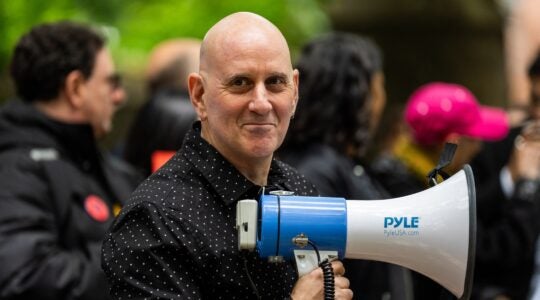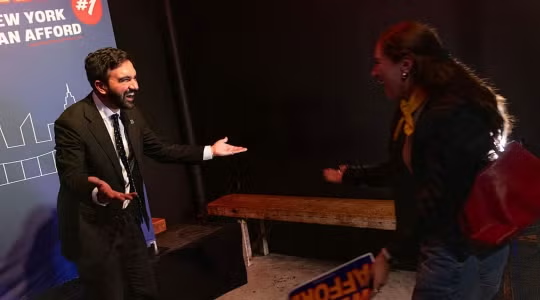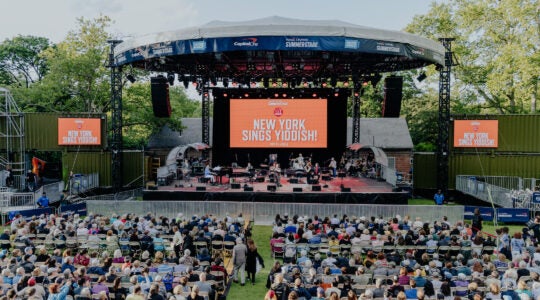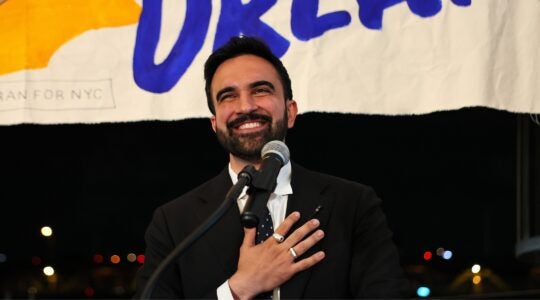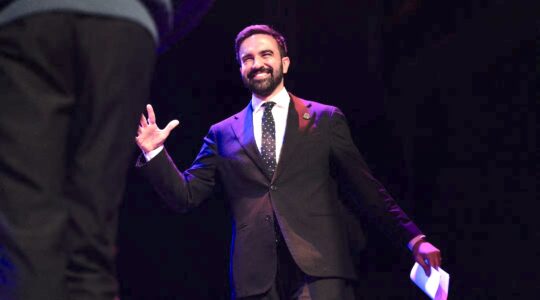ReelAbilities Film Festival brings together the community to promote awareness and appreciation of the lives, stories and artistic expressions of people with different abilities. Festivals takes place in New York and across the country–in 2016, Toronto became the first international city to host a ReelAbilities festival.
This May, the Toronto festival will showcase a 14-minute documentary “Adam’s Bar Mitzvah,” created by Estee Klar, Luis Moreira and Adam Wolfand, a teenager who has autism and uses a communicative device. The short film explores Adam’s world and the process that allows him to communicate–for his Bar Mitzvah and in daily life.
New Normal editor Gabrielle Kaplan-Mayer had the opportunity to interview Estee Klar about the film and her work with Adam.
GKM: Please share how the concept for the film came about. What was your goal in creating the film?
EK: I should say I’m a PhD candidate in Critical Disability Studies at York University who works with Adam to consider the conditions that are needed to support difference in society. Adam is a collaborator on the way we relate with autistic people. I am also the Founder of The Autism Acceptance Project and The A School in Toronto, a community school for social justice in education. Adam has been a big influence and collaborator on the way we “do” projects. His participation is essential to produce horizontal projects that are not dominated by non-autistic opinions and perspectives.
Autistic difference manifests in many ways, including movement, sounds, proprioception. I’ve been working alongside non-speaking autistic people for 14 years now. Autistic communication is largely non-verbal, however typing to communicate helps in a majority world of talkers. This is the dominant language that spends little time learning how to listen to other ways of experience, knowing and relation. This majority-of-talkers is a concern for Adam whose key question arose during his Bar Mitzvah lessons: why he doesn’t talk and “does the Torah book answer questions about why I don’t talk?”
A way of accessibility for the Bar Mitzvah was to ensure that Adam’s way of communication was honored. Instead of writing a speech, even on his iPad, and standing in front of people for 15 minutes while the iPad recited it, it felt more accessible to make a film of Adam writing his own essay, and the way he does so. To film it was to show how Adam writes, his process, and how support is essential to initiate his body movement to type. This speaks to how support is necessary for access – community, work, school and so on. We tend to work in disability and autism towards “independence,” thinking that an autistic must control their bodies in order to show competence and compliance. Part of this control also involves speech. We’ve got it all wrong. Support is essential to participation and contribution. You get to see in the film just how many people are involved in supporting Adam, who maintains his own agency in his writing and thoughts, and who is granted the right of access to this communication with support.
So the film achieved the goal of creating access, and enabling Adam to participate in the Bar Mitzvah process.
GKM: I would love to learn more about when Adam started typing and his process of learning. What challenges arose?
EK: I knew Adam was literate from the time he was 11 months of age – before he could walk. Like most non-speakers, Adam can utter phrases, words. He knew all his letters and numbers and began reading words from my bookshelf. His playpen was beside my bookshelf. He would hoist himself up and utter the titles of bookspines. The phenomenon is referred to as hyperlexia.
He was also capable of typing words independently on the computer, on my devices. But learning how to “organize” movement to type long thoughts and sentences is a different process. For instance, if Adam reads, he relies on his photographic memory – sustaining an eye gaze to read a sequential sentence would need support – such as a highlighter.
Adam writes that he “can’t feel my body in space,” often requiring a weight or a hand on his shoulder to provide it. This helps sustain the labour it takes for him to type a long sentence. I began with him this typing process more casually around 5 years of age. Over the years I became more focussed with him in practice – the labor of typing is immense when the body can’t always initiate or it needs to sustain the same rhythmic movement. Autistic movement is adaptive in many ways in order to see and feel – movements we sadly try to extinguish. Adam needs his body to move in order to think and feel: “Thinking is a feeling in a body that is always moving.” So to sit for longer periods takes practice and compromise with needed autistic movement. I culled from a variety of “methods” out there to make our own. I am not a methods advocate. Every autistic person has different needs that require close relationship and understanding.
My role is a lot like a careful translator – preserving the way and intention of the communicator, of Adam. I support the way he moves and he seems to trust my way of support with my close proximity and presence. He knows that I will not usurp what he needs to say and how he needs to say it, but he also relies on me to keep him going. In the video, you see my hand is providing a weight on his shoulder, but this weight is also emotional support. It’s an understanding of the rhythm of his own communication, and his idiosyncratic way of saying things. His language draws from his experience, and he uses interesting alliterations and metonymy that some might call poetic. Indeed, it’s the way of poetry if we think of a sensory language.
Each year, Adam requires less physical support. Now, my hand barely touches his mid back and more often, he is able to grab his own iPad and type without any support. The point is that to learn to type is a commitment of years and is embedded in deep understanding of autism, movement, and relationship. It does not derive from a biomedical understanding of autism which pathologizes autistic experience and being. If any challenges arose, it is from the people who think that people like Adam must demonstrate their competence through independence. This produces anxiety in the autistic person who is always under the stare and subject to interventions to extinguish their very autistic being. I in turn know that autistic experience and being-ness is valuable for all.
GKM: When people see the film, what do you hope that they will takeaway?
EK: I think initially people will see a non-speaking autistic person – who would have otherwise been relegated to “low-functioning classrooms” and forgotten – who has much to say and who has a curious mind. I hope that this leads them to see the many other autistics who communicate by typing, but most of all, to respect autistic difference. As Adam says, he wants to see that he is a “person who sees a lot of things and knows a lot of things and not a person who is unaware.” Just because an autistic person doesn’t look you in the eye, respond on demand… doesn’t mean that they are unaware or non-relational. Hopefully the film will inspire us to think about how we relate differently, and how autistic people are at their very core, relational to their surroundings and also, of course, to those around them. We do not all have to express our love, our curiousity, our desire, our knowledge and experience, in the same ways. Perhaps this film will enable people to open to these other ways of being-in-relation-with.
GKM: What are your hopes for the film beyond this premiere? Any practical suggestions for how community members can better communicate with someone who uses a communication device?
EK: We are in a really big hurry to have autistic people do everything the way the majority does – to “say hi” to look the person in the eye and so on… we preach inclusion, we say we value diversity, but now is the time to enact it. What do we do in the presence of difference? How do we respond? Can we sit with our own awkwardness, rethink our bias? Because this is what we must do. What we need in practice, even in society, is to slow down and reflect where the notions of autism come from – and how they influence our interactions. It is we who have difficulty relating! There is no quality of relation without respect, openness and time.
GKM: Now a question for Adam. Adam, you seem very connected to being Jewish. What has been your favorite part of preparing for your Bar Mitzvah?
Adam: I liked the party and the dancing. I like the Jewish way of partying.
Gabrielle Kaplan-Mayer directs Jewish Learning Venture’s Whole Community Inclusion which fosters inclusion of people with disabilities through the Philadelphia Jewish community. She loves writing/editing for “The New Normal” and for WHYY’s newsworks. Her latest book The Little Gate Crasher is a memoir of her Great-Uncle Mace Bugen, a self-made millionaire and celebrity selfie-artist who was 43 inches tall and was chosen for this year’s Jewish Disability Awareness & Inclusion Month Book Selections. Check out her recent Eli Talk on supporting families raising kids with disabilities.
The New York Jewish Week brings you the stories behind the headlines, keeping you connected to Jewish life in New York. Help sustain the reporting you trust by donating today.
